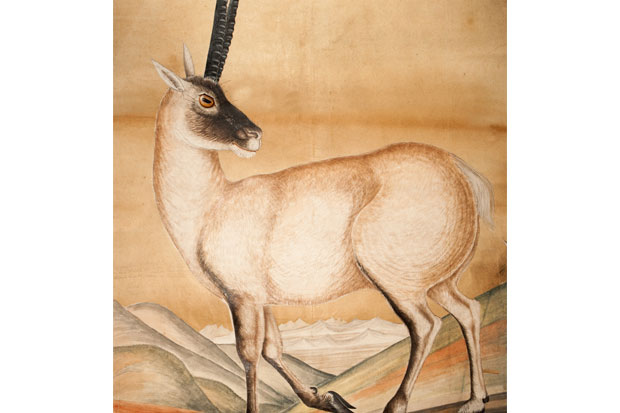It started as a ‘shoke’ — the Anglo-Indian slang word for ‘hobby’. Bored and lonely in Kathmandu, the young Assistant Resident, Brian Hodgson, began studying the flora and fauna of the hills, about the only occupation he was allowed to pursue apart from shooting woodcock and snipe under the constraints imposed by the Raja.
The unicorn of the Himalayas had cantered through Chinese mythology for centuries. In no time, Hodgson found a living specimen in the King’s menagerie, a panting antelope from the Tibetan plateau which, alas, soon expired, unable to survive at lower altitudes, but not before Hodgson had established that it in fact possessed two horns. The unlucky beast was christened Pantholops hodgsonii, the first of 22 species that bore his name by the time he was 30, including Hodgson’s Flying Squirrel, Hodgson’s Wild Cat, Hodgson’s Sand Fox and Hodgson’s Speckled Pigeon, all beautifully captured in watercolour by the local artists whom Hodgson trained, and reproduced in this handsome life of him by the old Himalayan hand Charles Allen.
But these were only the first of Hodgson’s discoveries or, to be more accurate, publishings to the world. This jumpy, prickly young civil servant then turned his attention to the marvellous temples of the Kathmandu valley, at that time scarcely known outside, ensuring their accurate reproduction by the aid of a camera lucida, and above all to the dusty manuscripts of the Buddhist monasteries which were not known at all. Bundles and bundles of these he unearthed and sent off to scholars and libraries all over the world.
He was self-taught, with only a single friendly lama to interpret the secrets, and he made several serious mistakes in the theology, but his passion never dimmed, for as he wrote to his sister Fanny back in England:
Here are before me the traces of a creed which once divided with Brahmanism the minds of the Hindus, but of which no visible trace, nay, not even an intelligible legend, remains in all the continent of India!
Charles Allen has written before, in The Buddha and the Sahibs, of how the servants of the Raj, in their spare time from being judges, surgeons and tax collectors, explored and exposed to the world the Buddhist teachings which had been extinguished in India itself, and which were to revivify not only Buddhism in all its schools but other world religions too in our own time.








Comments
Join the debate for just £1 a month
Be part of the conversation with other Spectator readers by getting your first three months for £3.
UNLOCK ACCESS Just £1 a monthAlready a subscriber? Log in